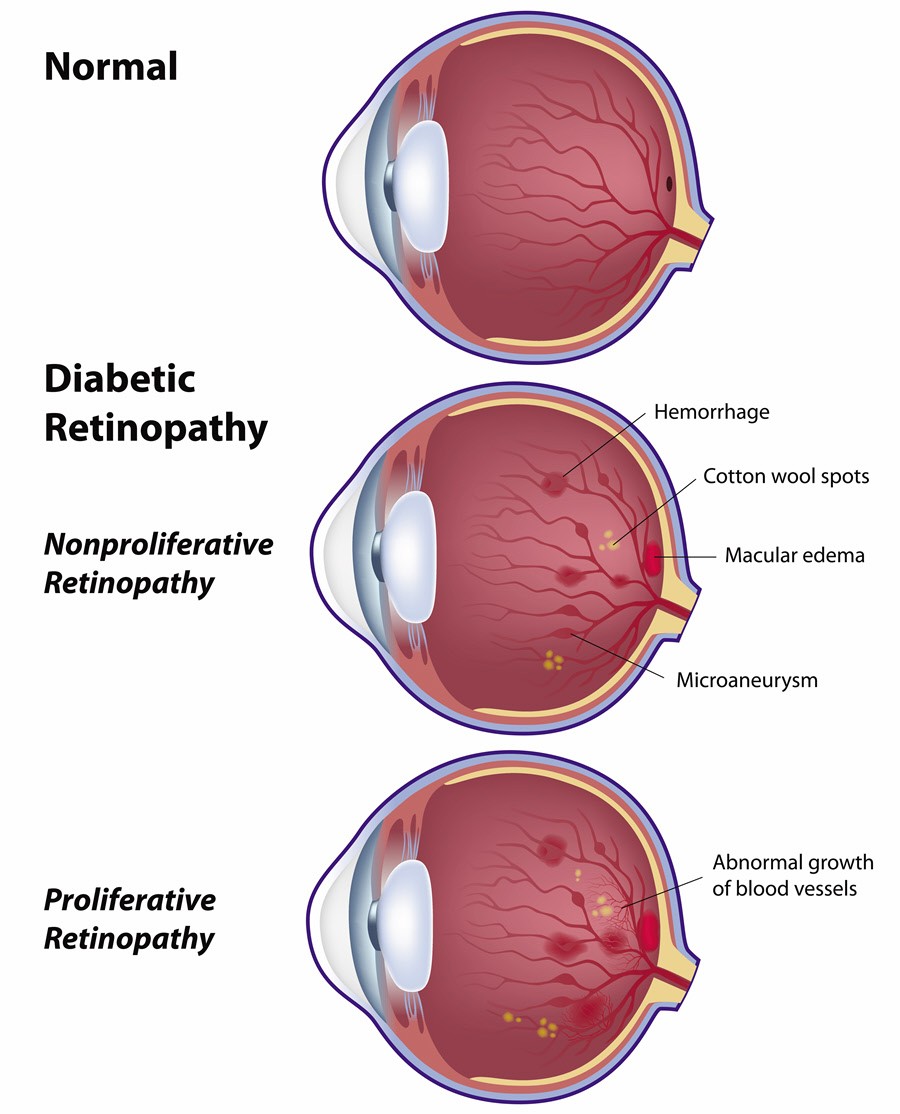
Contents
Eye Problems and Diabetes
Regular visits to an ophthalmologist are important if you have diabetes. High blood sugar increases the risk of eye problems, and diabetes is the leading cause of blindness in adults age 20 to 74.
If you notice blurred vision, don’t immediately buy new glasses. Blurred vision could be a temporary problem caused by high blood sugar levels in diabetes.
High blood sugar causes the lens of the eye to swell and changes your ability to see. To correct this problem, you need to get your blood sugar back into the target range. It may take up to three months for your vision to fully normalize.
Diabetes can also lead to serious eye problems such as cataracts, glaucoma, and retinopathy.
Cataracts and Diabetes
Cataracts cause clouding or fogging of the lens of the eye. People with diabetes are more likely to develop cataracts at a younger age and progress more rapidly.
Blurred or glared vision is a symptom of cataracts in diabetes.
Cataracts can be treated through surgery to remove the cloudy lens and replace it with a clear man-made lens.
Glaucoma and Diabetes
Glaucoma occurs when fluid inside the eye does not drain properly, resulting in increased pressure inside the eye. This causes changes in vision.
Treatment for glaucoma involves lowering eye pressure through medication, laser procedures, or surgery. Regular glaucoma screenings are important for people with diabetes.
Diabetic Retinopathy
Diabetic retinopathy is a complication related to damage of small blood vessels in the retina. It is a leading cause of irreversible blindness in industrialized nations.
The duration of diabetes is a significant risk factor for retinopathy. Early detection and treatment are crucial to prevent blindness.
Diabetic retinopathy can be prevented by controlling blood sugar levels and receiving annual eye exams.
Preventing Eye Problems With Diabetes
Follow these guidelines to prevent eye problems in diabetes:
- People with type 1 diabetes should have a dilated eye exam within three to five years after diagnosis.
- People with type 2 diabetes should have a dilated eye exam shortly after diagnosis.
- Annual eye exams should be performed for both type 1 and type 2 diabetes.
To prevent eye problems in diabetes, control blood sugar and high blood pressure.
When to Contact Your Doctor About Eye Problems in Diabetes
- Black spots in your vision.
- Flashes of light.
- "Holes" in your vision.
- Blurred vision.
SOURCES: American Diabetes Association, Centers for Disease Control and Prevention, WebMD.


